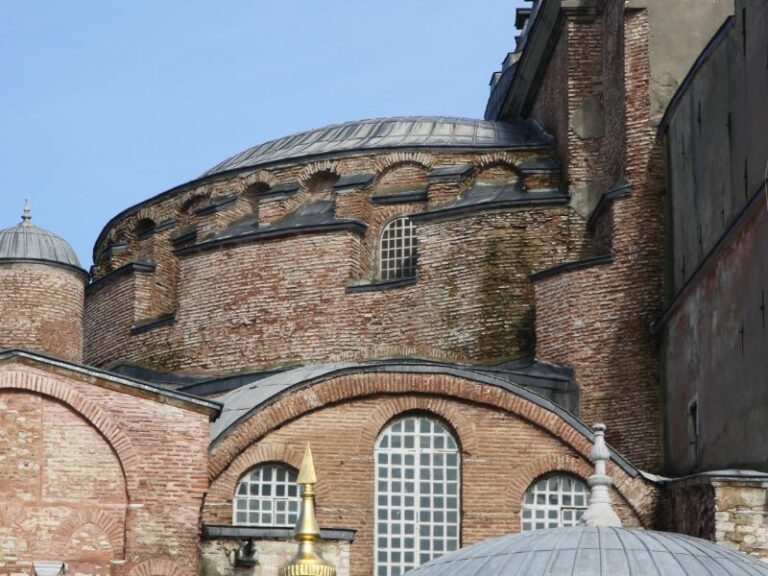Introduction
Ephesus, located in present-day Turkey, is an ancient city with a rich tapestry of history and culture. Founded in the 10th century BC by Ionian Greeks, it flourished under Roman rule to become one of the most significant cities of antiquity.
Known for its impressive architecture and as a hub of commerce and governance, Ephesus offers a glimpse into the grandeur of the ancient world. Today, it stands as one of the foremost archaeological sites of Ephesus, drawing historians, archaeologists, and tourists alike.
Brief History and Significance of Ephesus
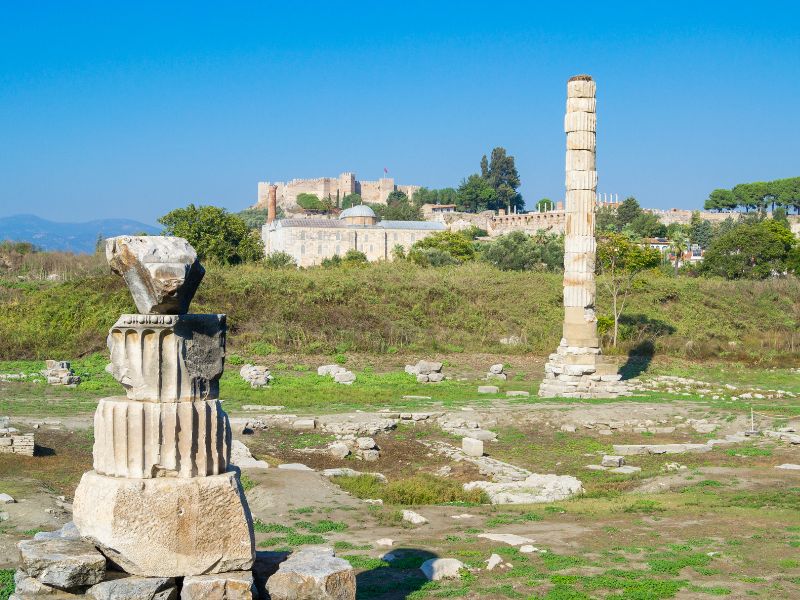
Ephesus boasts a storied past that spans multiple civilizations and epochs. Founded by Ionian colonists, the city rapidly grew in prominence due to its strategic location near the Aegean Sea, facilitating trade and cultural exchanges.
Under the Lydian King Croesus in the 6th century BC, Ephesus saw significant development, including the construction of the renowned Temple of Artemis, one of the Seven Wonders of the Ancient World. The city reached its zenith during the Roman period, particularly in the 1st and 2nd centuries AD, becoming the capital of the Roman province of Asia.
Renowned for its architectural marvels such as the Library of Celsus, the Great Theatre, and the Temple of Hadrian, Ephesus was a major center of politics, commerce, and religion. It played a pivotal role in early Christianity, with several visits by the Apostle Paul and being one of the Seven Churches of Asia mentioned in the Book of Revelation.
The Archaeological Sites of Ephesus give us a glimpse into these impressive structures and their significance. Over time, the city’s harbour silted up, leading to its decline. However, the remnants of Ephesus remain a vital link to understanding ancient civilizations and their enduring legacies.
Importance as a Major City in the Roman Empire
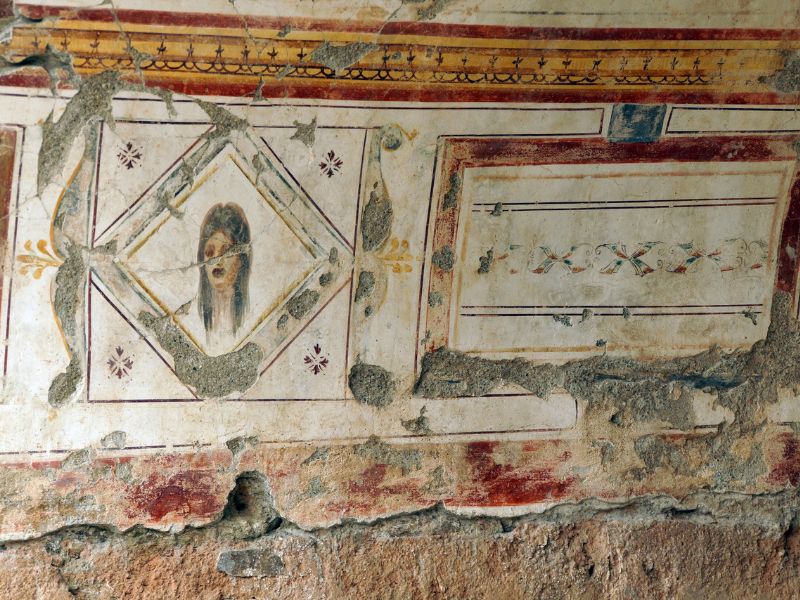
The Archaeological Sites of Ephesus highlight its significance as a major city in the Roman Empire. As the capital of the Roman province of Asia, Ephesus thrived as a hub for commerce, politics, and culture. Its strategic location along key trade routes fostered immense economic prosperity, attracting merchants and artisans from across the Roman world.
The city’s infrastructure reflected its importance, with sophisticated street layouts, grand public buildings, and advanced aqueduct systems showcasing Roman architectural ingenuity. A hallmark of Ephesus’s prominence was its harbor, enabling efficient maritime trade and solidifying its status as a commercial powerhouse.
Among the archaeological and architectural marvels are some of the era’s most illustrious monuments. The Library of Celsus, with its grand façade and extensive scroll collection, underscored the city’s intellectual significance. The Great Theatre, seating 25,000 spectators, served as a focal point for cultural and political gatherings.
Ephesus also played a pivotal role in spreading Roman culture and governance throughout the province. The construction of the Agora, or public square, facilitated civic administration and provided a forum for the exchange of ideas.
The city’s religious significance is evident within the Archaeological Sites, with temples dedicated to both Roman gods and local deities, reflecting a blend of cultural influences.
The prosperity and architectural grandeur of Ephesus during the Roman Empire leave an indelible mark on history, making the Archaeological Sites of Ephesus essential for understanding the complexities and achievements of ancient urban civilization.
Overview the Significant Archaeological Sites of Ephesus
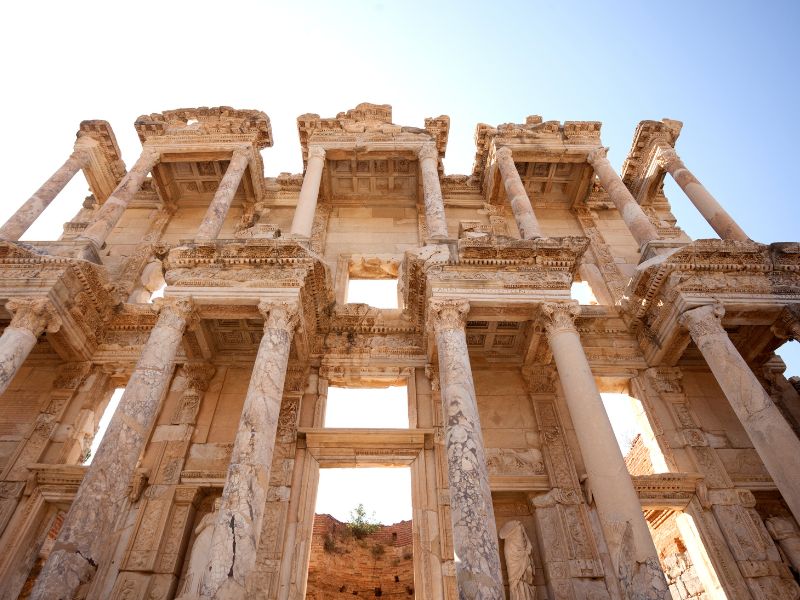
Today this ancient city stands as one of the most significant archaeological sites in the world, offering an invaluable window into ancient urban life. The meticulous excavation and preservation efforts have uncovered a wealth of artefacts and structures that provide profound insights into the complexities of ancient civilization.
Among the notable excavations are the Terrace Houses, which were the dwellings of the affluent, showcasing intricate mosaics, frescoes, and advanced architectural designs that reflect the opulence of their time.
The significance of archaeological sites of Ephesus is further underscored by the discovery of the Temple of Artemis, although largely in ruins, it offers a glimpse into the monumental scale and grandeur of the ancient world. Additionally, findings from the Temple of Hadrian and the Church of Mary highlight the city’s religious diversity and evolution over centuries.
The ongoing research at Ephesus continues to yield new findings, contributing to our understanding of ancient economic systems, social structures, and daily life.
The site’s well-preserved theatres, libraries, and temples serve as vital educational resources for historians, archaeologists, and scholars, enabling them to piece together the multifaceted history of this once-thriving metropolis.
Main Archaeological sites of Ephesus
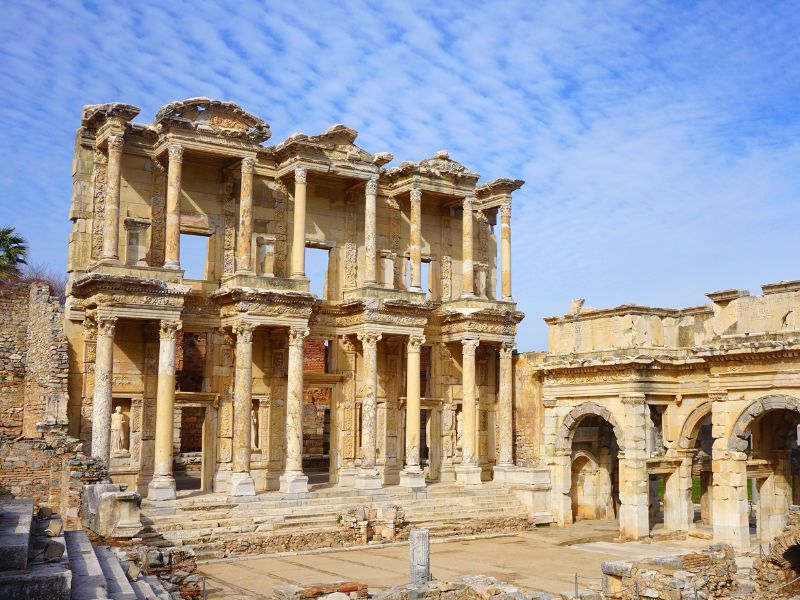
1. Library of Celsus
The library of Celsus is one of the most iconic structures in Ephesus. Built around 110 AD in honor of the Roman Senator Tiberius Julius Celsus Polemaeanus, it was designed to house 12,000 scrolls and served as a mausoleum for Celsus.
The library’s facade is a marvel of ancient architecture, featuring a two-story design with Corinthian columns and intricately carved statues symbolizing wisdom, knowledge, and valor. This monument stands as a testament to the value placed on education and scholarly pursuits in ancient times.
2. Mosaic Floors and Frescoes of Ephesus
The mosaic floors and frescoes scattered throughout Ephesus offer a vivid glimpse into the artistic prowess of the ancients. These intricate artworks adorned the homes and public spaces, depicting mythological scenes, daily life, and geometric patterns.
Preserved in remarkable detail, they provide crucial information about the lifestyle, religious beliefs, and social practices of the Ephesian people. Visiting these mosaics and frescoes is akin to stepping back in time and witnessing the vibrant culture that once thrived here.
3. Temple of Artemis in Ephesus
The Temple of Artemis, also known as the Artemision, was one of the Seven Wonders of the Ancient World. Dedicated to the goddess Artemis, it was an immense structure made entirely of marble, measuring 377 feet in length and 180 feet in width.
Despite its destruction and subsequent rebuilding over the centuries, its remains still evoke awe and admiration. The temple was not only a religious center but also a marketplace and a hub for cultural and social activities. Its grandeur underscores the city’s prominence and the flourishing religious life in Ephesus.
4. Terrace Houses in Ephesus
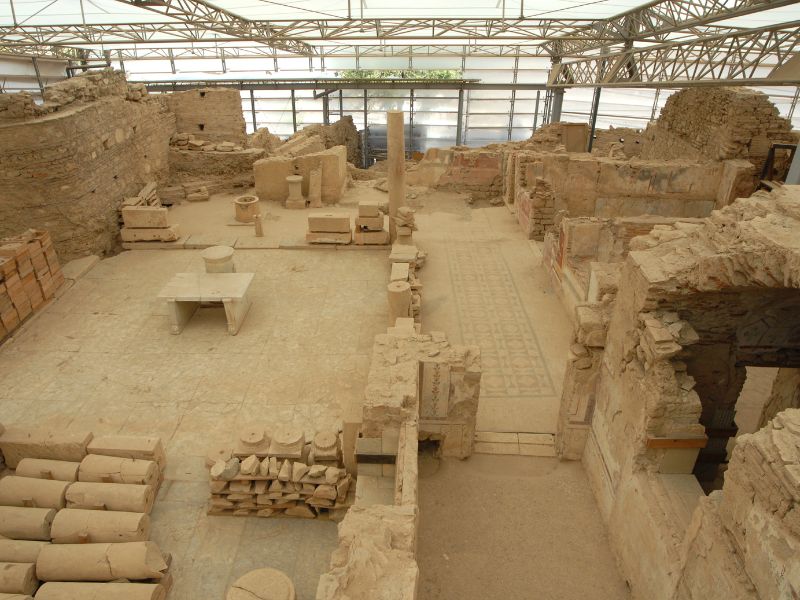
The Terrace Houses, situated on the slopes of Bulbul Mountain, are among the most fascinating aspects of Ephesus. These Roman townhouses, also known as “the houses of the rich,” were lavishly decorated with mosaics, frescoes, and marble paneling.
They provide a rare insight into the domestic lives of Ephesus’s affluent citizens, reflecting their tastes, comforts, and daily routines. Each house featured courtyards, private baths, and sophisticated heating systems, illustrating the advanced level of Roman residential architecture and interior design.
5. Temple of Hadrian in Ephesus
Built around 138 AD, the Temple of Hadrian is dedicated to Emperor Hadrian, who visited Ephesus during his reign.
The temple’s facade is adorned with intricate reliefs depicting mythological scenes, including the foundation of Ephesus. Its architectural elements, such as the elegant archway and Corinthian columns, exemplify the artistic and engineering skills of the period. The temple not only served a religious purpose but also reinforced the emperor’s presence and influence in the region.
Conclusion
Ephesus stands as a monumental testament to the ingenuity, culture, and history of ancient civilizations. Each of the arhcaeological sites of Ephesus—the Library of Celsus, the mosaic floors and frescoes, the Temple of Artemis, the Terrace Houses, and the Temple of Hadrian—offers a unique window into the past. These sites collectively highlight the city’s importance as a center of knowledge, art, religion, and governance.

